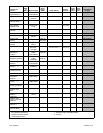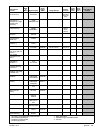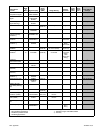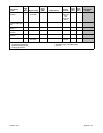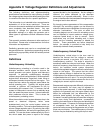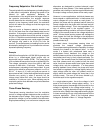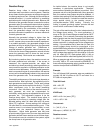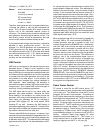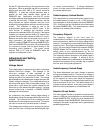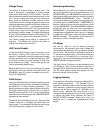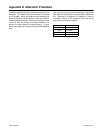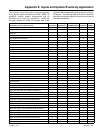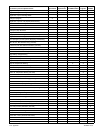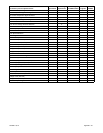TP-6200 10/12206 Appendix
Set the PF adjust according to the requirements of the
application. When a generator set will be connected in
parallel with the utility, VAR or PF control should be
ENABLED. If there are multiple generator sets in
parallel as well, then reactive droop should be
ENABLED also. Additionally, note that PF control
should be used only while the generator set is connected
in parallel with the utility. Parallel connection with the
utility requires the logical indication that the circuit
breakers tying the generator set bus to the utility bus are
closed. This indication is made by use of the
programmable digital input for VAR/PF mode. If this
input function is activated, the excitation control
changes to the selected VAR or PF control. If the logical
indicator is not present and the VAR or PF control is not
enabled, the control will not switch to VAR or PF control.
Because the active state for the digital input is a HI or
open connection, the default for the digital input
(VAR/PF mode) is DISABLED (displays ENABLED NO).
If the input is ENABLED by the user, it should be held low
by a contact or jumper until the actual closing of the
connecting circuit breaker(s). The proper control
method, VAR or PF must be ENABLED within the
regulator’s configuration menu.
Adjustment and Setting
Specifications
Voltage Adjust
The voltage adjust is entered as the rated or otherwise
desired line-to-line voltage. The average of the
line-to-line voltages is then regulated to the
corresponding value as previously described. The
setting may be as fine as tenths of volts. The voltage
adjust defaults to the rated system voltage whenever the
system voltage is changed. The voltage adjust may be
set to any value within ±10% of the system voltage. The
upper limit is ±10% above the system voltage and the
lower limit is ±10% below the system voltage. If a value
beyond these limits is entered, a RANGE ERROR
message will be displayed.
As a reference, the present voltage adjust setting is
displayed as well as the average value of the line-to-line
voltages. The individual line-to-line voltages are also
displayed on the subsequent menu screens. This allows
the user to monitor any individual phase, if desired.
The voltage adjust setting may be changed by means
other than the menu including user-defined digital input
or remote communications. If voltage adjustment
occurs, the new value will be displayed accordingly in
the voltage adjust menu.
Underfrequency Unload Enable
The underfrequency unload enable menu is used to turn
the underfrequency unload on or off. A YES entry will
turn the feature on and the display will show ENABLED
YES. A NO entry will turn the feature off and the display
will show ENABLED NO. The underfrequency unload
defaults to an enabled (ON) condition.
Frequency Setpoint
The frequency setpoint is the cut-in point for
underfrequency unloading. At any operating frequency
below the frequency setpoint, the output voltage will be
reduced. The frequency may be entered with resolution
to tenths of a Hz. The range of acceptable entries is 30 to
70 Hz. Any entry beyond these limits causes a RANGE
ERROR display and the setting will not change. The
default value is one cycle-per-second (or two for
non-ECM engines) below the normal system frequency.
The frequency setpoint changes to the default value if
the system frequency changes. A setting of 30 Hz
essentially disables the underfrequency unload feature
because most engines do not normally drop to speeds
this low, even during load applications.
Underfrequency Unload Slope
The slope determines how much voltage is reduced
during an unloading condition. The line-to-line voltage is
regulated to a value less than the voltage adjust setting
by this amount for every cycle below the frequency
setpoint. The voltage may be entered with resolution as
fine as one-tenth of one volt. The default value is 2.0
volts per-cycle-per-second. A zero entry for the slope in
effect turns the underfrequency unload feature off.
Reactive Droop Enable
This menu allows the user to enable the reactive droop
feature. A YES entry turns the feature on and the display
shows ENABLED YES. A NO entry turns the feature off
and the display shows ENABLED NO. Reactive droop is
intended to be used in a generator set-to-generator set
paralleling application.



